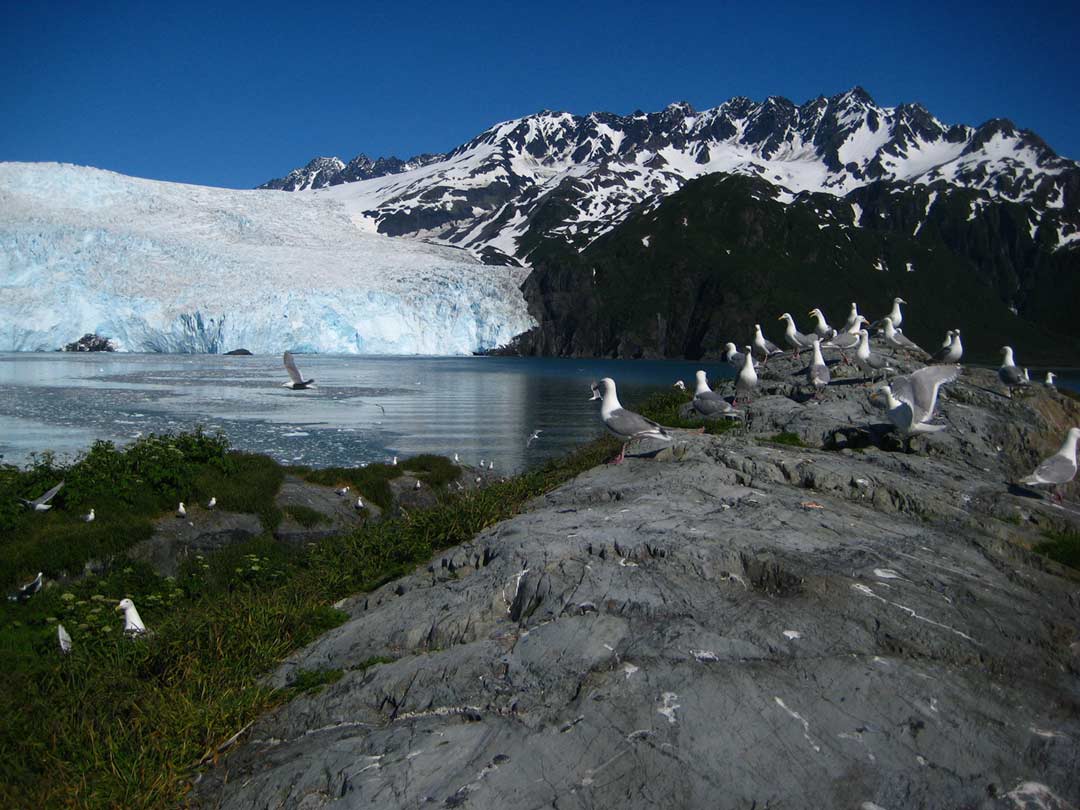It is a frigid morning in February at the University of Alaska Fairbanks (UAF). I'm huddled in my down jacket and mittens in my office - a double-wide trailer shared with eleven other grad students - starring restlessly at my computer screen. My funding proposal for aerial surveys for the coming summer is slow to start. It's hard to imagine that I could soon be headed south to comfortable temperatures and endless daylight for my summer fieldwork on the coast of Kenai Fjords National Park.
Three months later I found myself hovering above the park in the back seat of a helicopter. My Master's project is part of a bigger assessment of breeding seabird abundance and population trends in the region. During the summer of 2011 we surveyed the entire park coastline to determine which seabird species were present and where their colonies were located. There are more than 20 seabird species in the region, both nocturnal and diurnal, and residing on ledges, natural crevices, and within burrows, which makes creating a monitoring protocol a daunting task. My focus is on seabirds that nest on exposed cliff faces such as kittiwakes, murres, cormorants and gulls. I am using the glaucous-winged gull as a proxy for all the species that nest on cliff faces. The hope: Information gained from my project can be applied to other similar species in the region.
Kenai Fjords is a remote and rugged environment, prone to big seas, wind and rain. Many work days during the breeding season are lost to inclement weather. I took hundreds of photographs and in six hours of flying completed what would take 8-10 days by boat, the main mode of transportation along the fjords. Fortunately, on this day I experienced calm winds, warm sunshine, and stunning views; I could see clear from Bear Glacier to the distant arm of the outer coast and all of the layers of ice, capes, and islands in between from my lofty seat.

As with any field work, there are challenges to completing helicopter surveys - determining the correct flying altitude to minimize animal disturbance, finding which species are visible from the air, and ensuring I have the right camera equipment to capture clear photos with distinguishable bird individuals. Aerial methods can maximize the narrow windows of good weather typical at Kenai Fjords by cutting down the amount of time needed to complete surveys. Over the next few months, I will analyze and compare my images with counts of the same colonies using different survey methods and continue to evaluate whether aerial monitoring is a viable, cost-effective monitoring method for the park.
